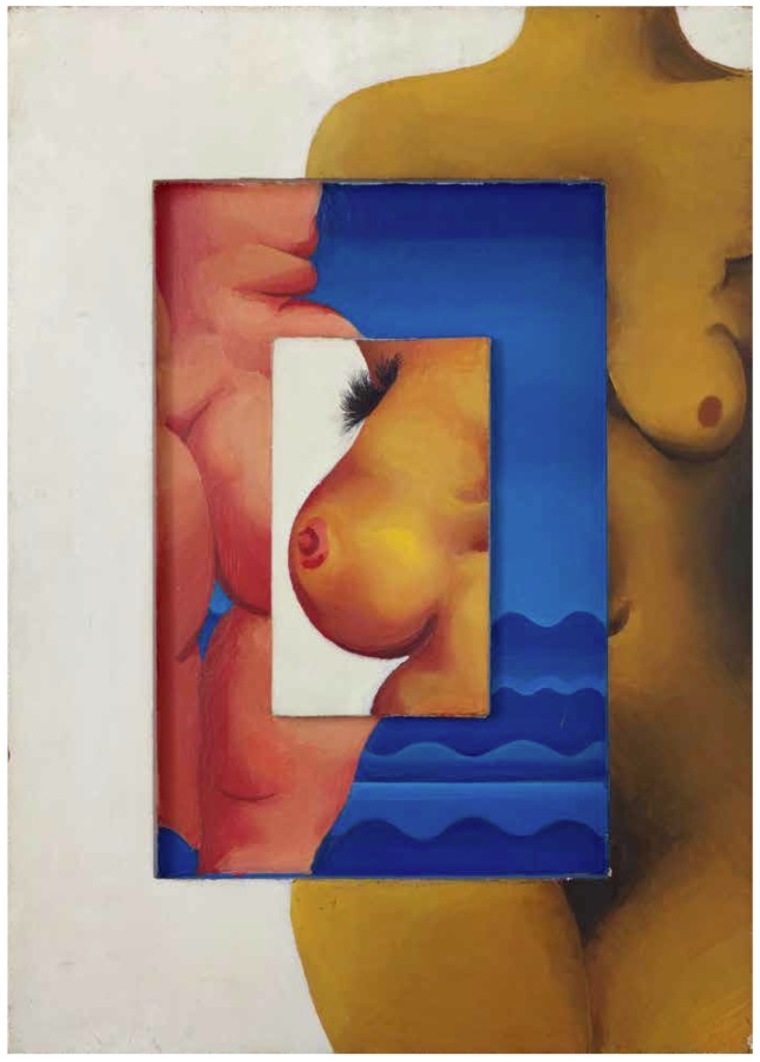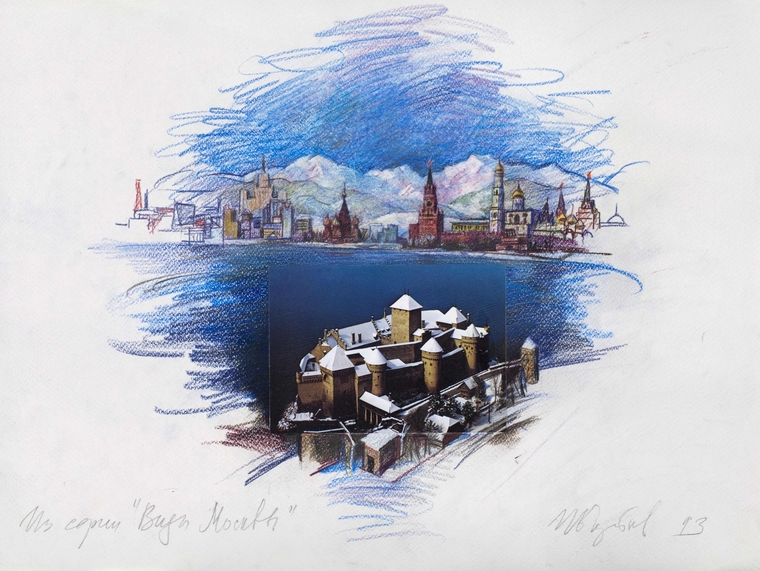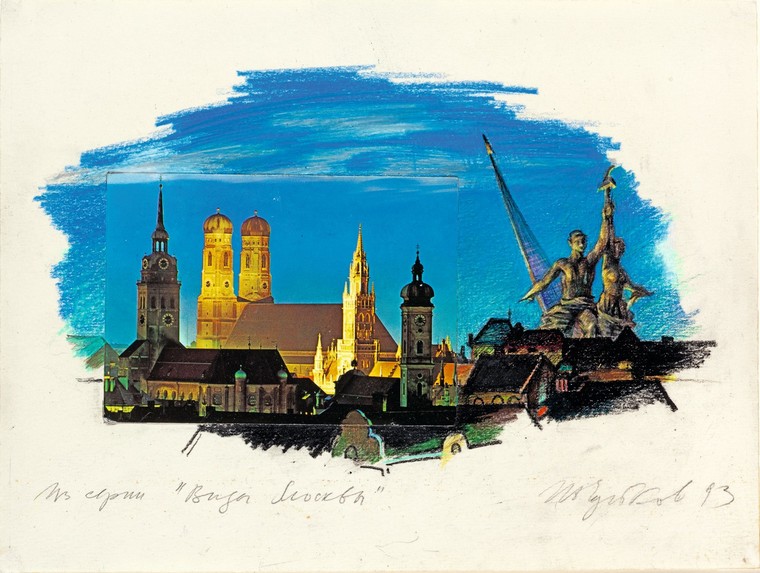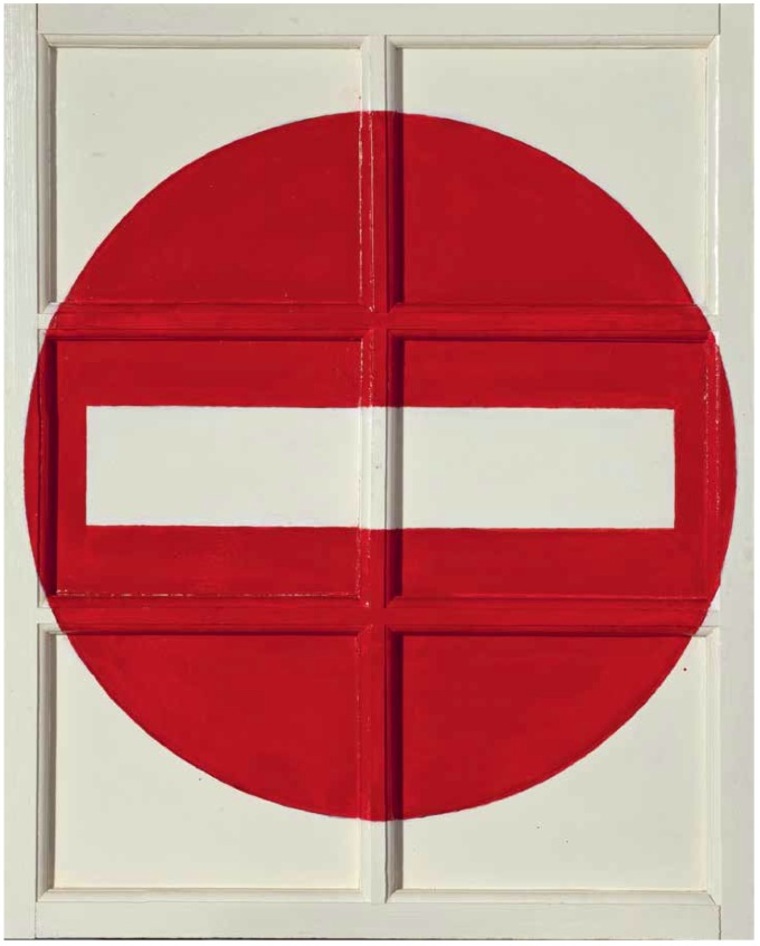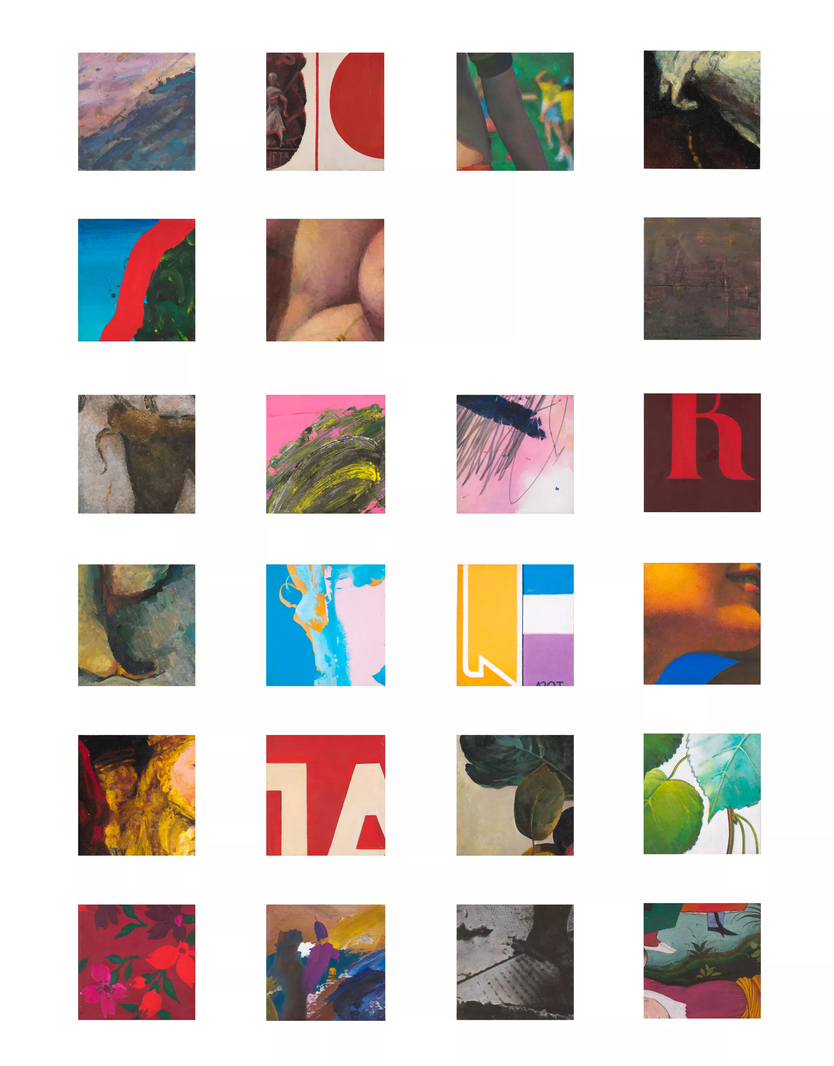
Ivan Chuikov is one of those, whom the philosopher Boris Groys has included in the circle of "Moscow's romantic conceptualism". His work "23 fragments" is included in the series "Fragments", which, along with the famous series "Windows", is a landmark for the artist. It concentrates the themes and techniques with which Chuikov continues to work even now – a comparison of reality and illusion, the combination of a variety of styles and directions, the appropriation and use of the image as a text.
In the work "23 fragments" Chuikov first of all refers to the operations of fragmentation and recombination, combining fragments of Renaissance painting and Soviet propaganda posters, impressionistic, abstract canvases and socialist realistic painting on one canvas. Similar work with images, the displacement of any hierarchy (the fragment of the football poster is as important here as the Masaccio canvas) are the ideal method to talk about art in the era of rapid technological development, where the possibility of reproducibility deprives the product of uniqueness and aura.
“In his works, any hierarchy is de-hierarchical, any central positions are decentered, – Boris Groys wrote about Chuikov. – Any artistic form is recognized as equally deserving attention – but only after they are deprived of all their traditional ideological claims”. In this case, the goal pursued by Chuikov is not truly postmodernist – in his comparisons there is no sign for postmodernism of irony or satire. Firstly, it is almost impossible to decipher them – things depicted in Chuikov’s works do not always refer to what they might seem like at first glance. Secondly, it is important that there is not only a reference to a particular work or image, but the composition of the work, where the configurations are not so much about Renaissance and agitation posters, but many shapes and colors. For Chuikov, conceptual and artistic tasks are equally important: creating works, he aspires to reveal some potentially infinite pictorial plane. The work «23 fragments» is its characteristic embodiment in the artist's work. V
